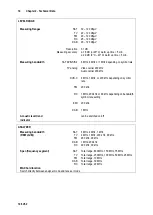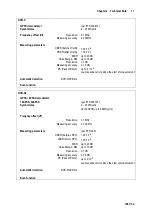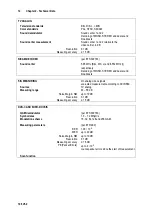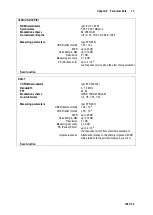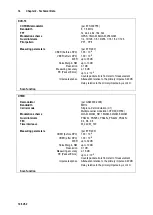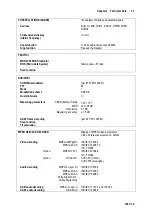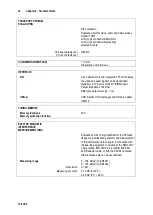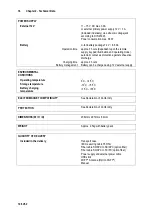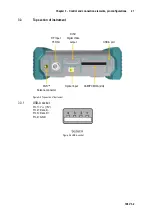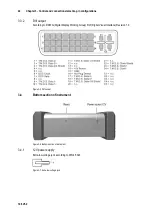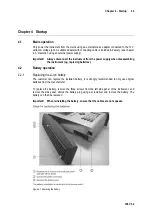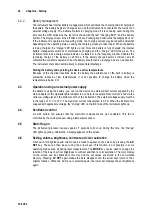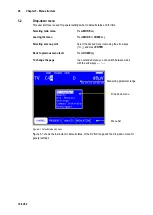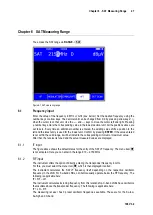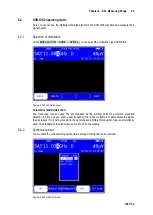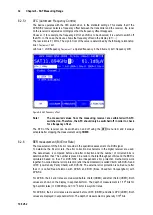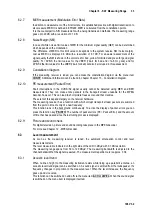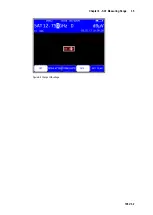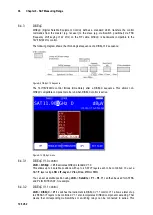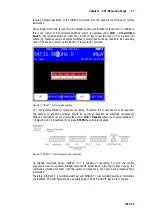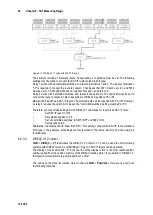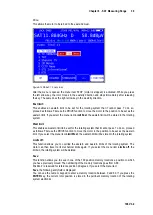
24
Chapter 4 - Startup
106 V3.2
Battery management
4.2.2
The instrument has internal battery management, which optimizes the charging and discharging of
the battery. The battery begins to charge as soon as the instrument is connected to the mains or an
external voltage supply. The instrument starts in charging mode if it is not being used; during this
time only the OSD window on the top left is shown with the text “Charging BATT” and the battery
symbol. The display screen turns off after a minute. Pressing any button turns the display back on.
If the instrument is operated in measuring mode, the charging current may be reduced somewhat
depending on the operating status, causing the charging process to take longer. When the battery
is being charged, the “charge” LED lights up red. Once the battery is fully charged, the internal
battery management switches to maintenance charging and the “charge” LED turns green. The
instrument also has a charge status indicator. A status bar in the frequency window indicates the
remaining charge of the battery at all times. If the battery charge becomes critical, can still
complete the current measurement, but the battery should then be recharged as soon as possible.
The instrument shuts down automatically to prevent total discharge.
Storing the battery and operating the device at low temperatures
Because of the chemical reactions inside the battery the performance of the built in battery is
somewhat reduced at low temperatures. It is not possible to charge the battery when the
temperature is below 0
°
C!
4.3
Operation using an external power supply
In addition to using the battery, you can run the device on external direct current supplied by the
mains adapter or the cigarette lighter adapter in a vehicle, for example. Direct current is fed via the
extra-low voltage jack on the bottom section of the instrument. The external voltage supply must be
in the range of 11 V to 15 V. The maximum current consumption is 3.0 A. When the instrument is
supplied with appropriate voltage, the “charge” LED on the front side of the instrument lights up.
4.4
Ventilation control
A small, built-in fan ensures that the electronic components are well ventilated. This fan is
controlled by the microprocessor using a temperature sensor.
4.5
Switching on
The instrument processor requires approx. 5 seconds to boot up. During this time, the “charge”
LED lights up yellow. Afterwards, a display appears on the screen.
4.6
Setting volume, brightness, contrast and color saturation
A bar each for brightness and volume can be made to appear on the screen by pressing the
AV-
SET
key. These can then be set using the arrow keys. This function is not possible in some
operating modes such as during level measurement. The
MODE
key can be used to change the
function of the lower bar from brightness to contrast and then to color saturation. The color display
on the screen can be optimized in this way and the set values are stored in the non-volatile
memory. Pressing
AV SET
again makes the bars disappear and the arrow keys return to their
original function. When the AV menu is selected again, the lower bar displays the set brightness
again.

